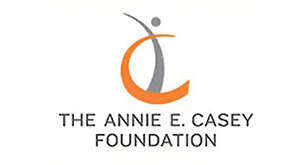State and National Data to Drive Foster Care Advocacy
BALTIMORE — Permanent families and supportive adult connections, stable housing and postsecondary education remain beyond reach for too many young people with foster care experience, according to “Fostering Youth Transitions 2023: State and National Data to Drive Foster Care Advocacy,” a data brief released today by the Annie E. Casey Foundation. “Fostering Youth Transitions 2023” examines the experiences of teenagers and young adults in foster care as reported by all 50 states, the District of Columbia and Puerto Rico — and how child welfare systems support their transition to adulthood. The brief expands on the Casey Foundation’s “Fostering Youth Transitions 2018,” which shed light on older youth in foster care and increased awareness about those who age out. State data profiles trace the experiences of young people ages 14 to 21 (“transition-age” youth) who were in foster care between 2006 and 2021, including those who exited without being placed with a permanent family. Analyzed for the Casey Foundation by Child Trends, the new data show:
- For young people ages 14–21 entering foster care, cases reported as “neglect” increased from 29% in 2006 to 48% in 2021. Neglect — not child behavioral problems or abuse — is the reason cited most frequently when older youth enter foster care.
- Nationally, child welfare systems find families for fewer than half of teenagers and young adults in foster care — and proportionately for fewer today than in 2016.
- More states offer extended foster care and assistance for young people beyond age 18 than did in 2018, but enrollment is low. States also inconsistently document participation, which can complicate efforts to ensure that these young people receive services for which they are eligible.
- Although the size of the foster care population is significantly smaller today than in the past, and fewer young people are placed in institutional settings, children of color remain overrepresented.
- Too few transition-age teenagers and young adults receive the federally funded services intended to prepare them to thrive when they leave foster care. Fewer than half (47%) of transition-age young people received one or more of the services during all the years they were eligible between 2013 and 2021; less than one quarter (23%) were served in 2021.

